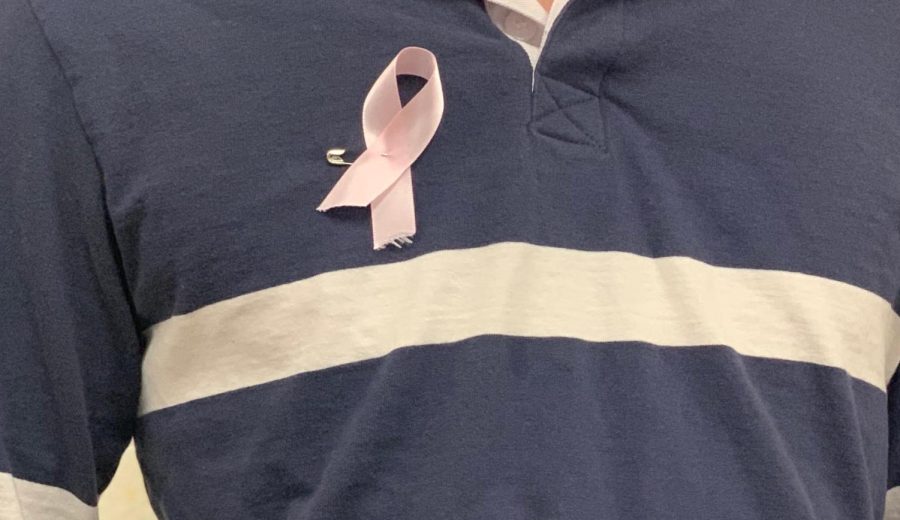Cancer Awareness: a breakdown of major types of cancer
There are a number of different cancers affecting different populations. Being aware of some of the leading types can help spread awareness and prevention.
November 8, 2021
Cancer is the second leading cause of death in the United States. Five hundred and ninety-nine thousand, one hundred and eight Americans died from cancer in 2017, accounting for 21.3% of total deaths. For this reason, researchers are constantly working to improve treatment.
However, the problem with cancer is the variability between different types: one treatment may help one type of cancer, but not another. With Breast Cancer Awareness Month coming to a close, it is necessary to make sure you’re aware of the basics of breast cancer as well as the other major types of cancer. The more you know, the more you will be aware of potential symptoms. After all, having early treatment gives a person the best chance.
Secondly, understanding more about cancer in general is crucial to understanding its danger. When people hear the term survival rate, they assume it is the percent of people who are cured from cancer and don’t get it again. The scary reality of this number is that it represents the percentage of people with cancer that survive at least five years, regardless of if the cancer is still active. Just because a cancer has a high survival rate doesn’t mean it isn’t dangerous, so making sure you are aware of any symptoms is crucial for catching it early.
Many people also do not fully understand what cancer is or the types of cancer. There are benign and malignant cancers. Since malignant cancer has the potential to spread and threaten your life, many nurses consider malignant cancer to be the only type of cancer. Benign does not spread. The danger is, when it becomes malignant: this means it has the potential to move. Once it has metastasized, it has spread. Cancer is a genetic disease, so it can be caused by errors during cell division, from damage to DNA, or even inheritance from parents. The reason for a higher risk of cancer as we age is because the body has a harder time of eliminating cells before they turn cancerous.
The four stages of cancer represent the amount the cancer has spread, and the higher the number, the worse the condition has gotten. In Stage 1, also known as early-stage cancer, the cancer is only found in one area of the body. In Stages 2 and 3, the cancer has grown larger and grown into some nearby tissues and lymph nodes. In Stage 4, the cancer has become metastatic and spreads to other parts of the body.
Breast Cancer– For American women, there is a one in eight chance of developing breast cancer. Breast and skin cancer are the most common cancers for women to have. Lung cancer is the only cancer that kills more women each year. There are as many as 3.8 million breast cancer survivors in the United States.
So what is it? Breast cancer starts in the breast when cells begin to grow out of control. It can occur in both men and women, although more commonly in women. To check for symptoms of breast cancer, look for a new lump or mass in the breast. If someone thinks they might have symptoms, they should see a medical professional right away. Medical professionals are able to use mammograms to detect cancer before someone may be able to notice a physical difference. Breast cancer spreads by moving into lymph nodes. The more lymph nodes the cancer is found in, the more likely it is to be in other organs, hence increasing the danger. Treatment depends on the stage of the cancer. Usually there is some sort of surgery to remove it. Some people who are at risk may choose to take preventive medication or have preventive surgery before developing symptoms to decrease their risk.
Ovarian Cancer– Ovarian cancer is the fifth leading cause of death from cancer for women. The chance for a woman to develop ovarian cancer is 1 in 78, with the chance of dying from it 1 in 108. Although ovarian cancer was once believed to start in the ovaries, newer research suggests it may start at the far end of the fallopian tubes. Often this type of cancer goes undetected until it has spread to the pelvis and belly, at which point it is more difficult to treat. This is due to little to no symptoms in the early stages, and vague ones in later stages such as a loss of appetite or weight loss. Most women who develop this type of cancer are over the age of 63.
Multiple things may put someone at a higher risk of developing this cancer, such as never having a full-term pregnancy or having a pregnancy at a later age. To detect ovarian cancer, regular health exams may give the potential to feel the cancer, but usually not at an early stage. There are tests which can screen someone for ovarian cancer. A screening test can be important to get if you are experiencing symptoms, which include bloating, pelvic or abdominal pain, or urinary symptoms.
Lung Cancer– Lung cancer is a cancer that starts in the lungs and is responsible for the most cancer deaths. Most people diagnosed with lung cancer are at least 65 years old. More people die from this cancer every year than from colon, breast, and prostate cancers combined. As people quit smoking, the number of cases of lung cancer decreases too. Those who do not smoke get this type of cancer from secondhand smoke, air pollution, or other factors. For those who don’t have symptoms, screening can be used to determine if someone has lung cancer. Otherwise, symptoms may include, but are not limited to, a cough that doesn’t go away, chest pain, shortness of breath, loss of appetite, weight loss and wheezing. Treatment may require radiation or chemotherapy.
Prostate Cancer– Prostate cancer begins in the prostate gland, usually as the type called adenocarcinoma. 1 in 8 men are diagnosed with prostate cancer during their lifetime, mostly in men at least 65 years old. Prostate cancer is the second leading cause of death in American men, after lung cancer. This type of cancer can be caused by DNA mutations, which can be inherited. Screening can be used to find out if the type of cancer is present. Sometimes this leads to over-diagnosing or over-treatment, since these cancers can grow too slowly to ever cause a problem in a man’s lifetime. Although early stages of prostate cancer often have no symptoms, later symptoms may include problems urinating, blood in the urine, pain in the hips, back, or chest, loss of bladder control, and more. To treat prostate cancer, radiation therapy may be necessary.
Skin Cancer– Skin cancer is the most common type of cancer. It usually occurs on skin that has been exposed to the sun. There are three major types of cancer: basal carcinoma, squamous carcinoma, and malignant melanoma. Skin cancer is often caused by damage to the skin, such as from radiation from sunlight. To look for potential signs of skin cancer, people are told to look for asymmetry, non-smooth borders, abnormal colors, and a diameter larger than 6 mm in moles. Abnormal skin growths should be examined by a doctor. The most important sign to look for is one best examined by yourself: evolution. If a mole grows or changes color, shape, or size, it should be checked out. It does not mean you have cancer, but it is a sign that should be checked out just in case. To prevent skin cancer, wear sunscreen in the sunlight. If you have already been diagnosed with skin cancer, methods of treatment may include a type of surgery, radiation therapy, or chemotherapy.
Colorectal cancer– This cancer type begins in the colon or rectum. Depending on where it starts, it may be called colon or rectum cancer. Both the colon and rectum are parts of the large intestine. Growths called polyps start growing in the inner lining of the rectum or colon. If cancer forms, they can grow into the walls of the rectum or colon. If the cancer has spread, treatment may include surgery, radiation therapy, or chemotherapy. To catch colorectal cancer before it spreads, look for rectal bleeding, a change in bowel habits, abdominal pain, unintended weight loss, and fatigue. With age, it is more common for someone to develop colorectal cancer, so screening may be an important way to detect cancer early on.
Only so many cancers can be included in one article, so visit this website to see a full A-Z List: https://www.cancer.gov/types for further research. Everyone knows someone affected by cancer, so the more we can do to help, the better. To help fight against the cause of cancer, look for ways to donate, fundraise, and volunteer.








